
The taxonomy of contemporary classical music—new music, contemporary music, whatever you want to call it—is a thorny issue. But every month, we’ll take a look at some of the best composer-driven music to surface here on Bandcamp, that which makes room for electronic experimentation, improvisation, and powerful takes on old classics.
Horacio Vaggione
“Schall” / “Rechant”
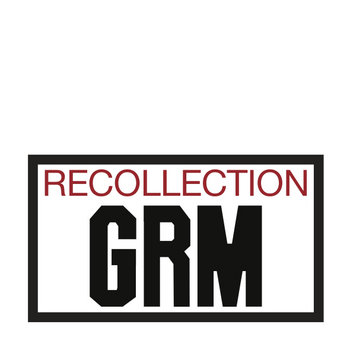


Vinyl LP

Composer Horacio Vaggione is one of the key figures in electronic music of the last five decades. Born and raised in Argentina, where he co-founded the Centro de música experimental (CME) in Cordoba in 1965 before studying with Lajaren Hiller in the U.S. He later decamped to Europe, spending several years in Madrid before settling in Paris in 1978, where he has remained ever since, becoming closely aligned with French institutions like IRCAM and GRM. It’s at GRM where he made these four stellar pieces between 1994–2002, each a marvel of gem-like complexity. “Schall” is derived from sounds made on a piano, and while one can certainly hear fleeting glimpses of a single struck note or a dark cluster, his electronic manipulation of the source instrument is astounding, atomizing familiar tones into percussive, glassy sprays of pointillistic sound that unspool in thrilling rushes, liquid swells, and hall-of-mirror refractions. “Rechant” begins with a larger palette of sound—percussion, flute, strings—but Vaggione abstracts those sounds even more. The level of detail, cross-cutting rhythms, and the depth of the composer’s sense of dynamics is remarkable, and I have to imagine that producing these sounds nearly three decades ago was significantly harder than it would be now. But the enveloping trippy richness and motion of these works isn’t limited by technology—once immersed in this sound world I have little reason to think about the tools he used to make it.
Hugues Dufourt
Surgir



Compact Disc (CD)

Surgir is A monumental 3-CD overview of orchestral and chamber music from French composer Hugues Dufourt. Dufourt coined the term “spectral music”—which deployed spectral analysis of sound as a key tool—back in 1979, although his aesthetic and working ideas were less rigid than composers like Gerard Grisey and Tristain Murail who later became synonymous with the movement. The contents of Surgir span more than four decades, beginning with Dufourt’s first orchestral work—the title composition—from 1980, and continuing right through recent pieces featuring the electric guitar playing of Yaron Deutsch. Several of the major works were originally commissioned, premiered, and recorded by Germany’s WDR Sinfonieorchester, although disc two captures the entirety of the work that was inspired by the frescos adorning a palace in Würzberg. The frescos were painted by Giovanni Battista Tiepolo between 1752–53, and depict ancient historical figures in Africa, Asia, Europe, and the Americas. His music often arranges dense harmonies and stark gestures in deliberate collisions and explosions, as an undercurrent of violent tension sits alongside music of extraordinary grandeur and richness. The music on the third disc features Deutsch’s versatile electric guitar playing, not as a rock-inspired ingredient, but as a more portable, adaptable tool for electronic texture and color, which the musician achieves with stunning precision. As with all of the releases on Bastille Music, the beautiful packaging includes in-depth essays and imagery.
Quatuor Bozzini
Jürg Frey: String Quartet No 4
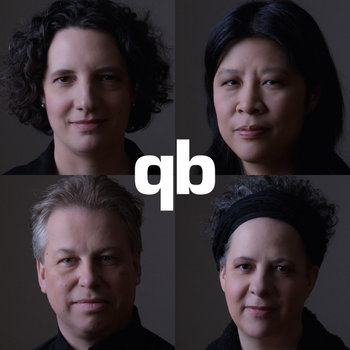

The elevation of veteran Swiss composer Jürg Frey, a key figure of the post-Cagean Wandelweiser Collective, came after Montréal’s Quatuor Bozzini premiered Frey’s second string quartet back in 2001. In the decades since, they’ve continued to work together—most recently on last year’s sublime Continuité, fragilité, résonance, where they formed a gauzy, heavenly alliance with the reed ensemble Konus Quartett. The arrival of Frey’s fourth string quartet is grounds for celebration. The intensely intimate, gently voiced epic doesn’t necessarily unveil new procedures or ideas—the molasses-slow pace and harmonic grandeur of the early works felt radical at the time—but it does feel like a stunning refinement and a generous expansion of those sounds. Most of the five-movement work is hushed, the strings producing a faint glow of sound that radiates a gauzy rainbow of color. Naturally, in music designed to be relatively static and still, any change or shift carries weight. When the quartet raises the intensity, as in the opening passages of the third movement, the sound hits hard, like a sudden explosion cracking open new possibilities—including an arrestingly beautiful solo violin line drifting through the sorrowful tumble of stately chords. But when nothing is happening, that emptiness is exquisite, carving out a space for contemplation that creates the most ravishing place on earth during its placid unfolding.
Yarn/Wire
Currents 8



Compact Disc (CD)

I’m a big fan of the series Currents, operated by the adventurous New York quartet Yarn/Wire—a rare two piano/two percussion group. The ensemble actively commissions young composers, often working closely through the writing process. This series allows recordings of the new work to reach listeners—most commissions are heard a couple of times, and then put away to make room for what comes next. The three works on the group’s eighth edition all deal with overlapping, sustained sounds. I’ve been transfixed by Sarah Davachi’s “Feedback Studies for Percussion,” an adaptable compositional framework concerned with how dense overtones from one set of instruments can impact the sounding of another. It’s a deliciously slow-moving work, in which crawling piano arpeggios patiently unfurl and intensify, pierced by ringing tuned percussion—gongs and tubular bells—that shape drifting melodic patterns beneath the hammering din. Those gorgeous tones seem to struggle to express themselves, forcing us to lean into and uncover the sounds. “Acoustic Sourings” by Kelley Sheehan uses custom-made, battery-driven speaker-like devices triggered clips and metal sticks attached to them, producing sudden bursts of static-laden noise, and those sounds are sometimes damped by objects placed over them. Further devices are placed on low piano strings, whose vibrations interrupt the speaker sounds, delivering a feast of lovely sonic vandalism. Victoria Cheah’s “Ocean Into Wire” choreographs a dance between tinkling and bowed percussion, electronic tones and white noise, battered and bruised by and naked piano chords and their resonance.
Ann Cleare
An Cúigiú Cúige
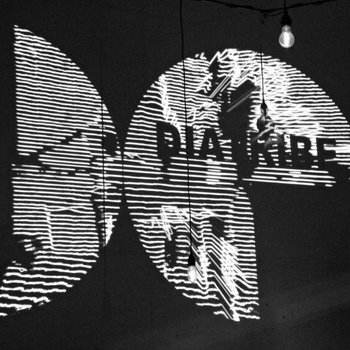





This stark, poetic work by Irish composer Ann Cleare explores the idea of the center—something that radiates outward, socially and culturally, linking communities from a shared heart. It’s a notion of her homeland that she discovered late in life. An Cúigiú Cúige functions as a kind of portable, stripped-down version of a choral and orchestral work by Cleare called MIDHE, named for a long forgotten Irish province in the center of the country, before it was colonized and partitioned. The Irish title references the fifth province. Drawing upon contemporary poetry by Annemarie Ní Churreáin, field recordings, and “mappings from Croghan Hill, Loughcrew Cairns, and Uisneach, three sacred hills at the heart of Ireland’s now-disappeared fifth province,” Cleare has fashioned a mysterious sonic journey, with three singers—Frauke Aulbert, Michelle O’Rourke, and Eoghan Desmond—layering the texts in minimal swoops and collisions, rife with extended technique as much as operatic flourishes, with conversational asides and commentary from accordionist Dermot Dunne. Cleare weaves those elements into an amorphous drift of abstract electronics occasionally punctured by the peal of distant church bells or the indistinct wash of seemingly eventless outdoor sounds. Cleare transcribed those processed field recordings for the orchestral version, but there’s something more alien and almost sci-fi about this treatment, which reinforces a sense of dislocation that inspired the composer in the first place.
Noah Jenkins
Without Persistent Environments
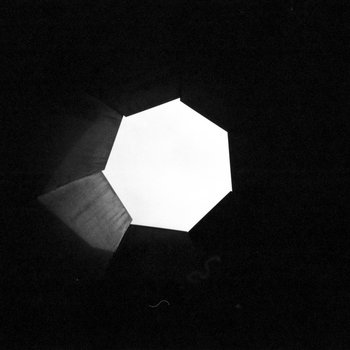




Compact Disc (CD),



Working closely with trombonist Riley Leitch, Chicago composer Noah Jenkins has shaped two extended works built upon stacked sustained lines awash in luxurious overtones. “Without persistent environments, the sense of confusion and flux might only worsen,” features Leitch playing the primarily line over a series of earlier recordings capturing his long tones articulated in various Chicago locales, including a reverberant cathedral and another alongside Lake Michigan, where the sounds of the shoreline unspool beneath the plush, shifting layers of serene brass, cut and pasted in dynamic arrangements that well and recede. “Rotations Placement Providence Everywhere,” which clocks in at a staggering 57 minutes—compared with the comparatively brief 18-minute opening track—deploys a live looping set-up to layer a seamless shuffle of long tones composed in just intonation, which seems to thicken the already rich harmonies with thick clouds of overtones that melts any sense of time. Neither piece bothers with melody, instead placing the focus entirely on the dynamic interaction of clustered sound drifting into eternity.
Yu-Hui Chang
Mind Like Water
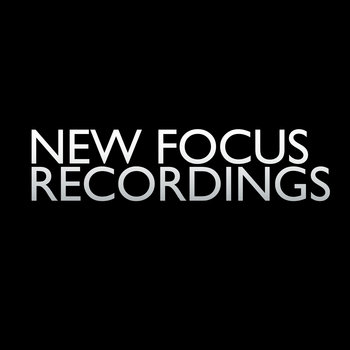

Composer Yu-Hui Chang attempts to put her thought processes into sound on this beguiling portrait album of music written between 2012 and 2019. The Taiwanese native, who currently teaches at Brandeis, applies the inner conversations, conflicts, and back-and-forth that occurs inside the brain throughout the creative process. Those internal negotiations provide an ideal framework for the ways a composition can unfold, as the opening work In Thin Air, a three-movement gem for piano, violin, and percussion, moves between the hyper-kinetic section that scampers around in a collective upper register is followed by a section where things slow down considerably, with keening violin and percussion that toggles from irregular beats to faint smears produced by the precise rubbing of drum surfaces. In “Germinate,” performed by the Composers Conference Ensemble, a terse back-and-forth gestural exchange eventually stretches out, pointillistic interplay evolving into extended themes, fraught though they may be. In the title work, performed here by the Lydian String Quartet, Yu-Hui embraces frenetic uncertainty, meandering exploration, and brief crystallizations in a way that’s gripping rather than alienating. The composer never uses this template as a license to disregard structure, and I would have never picked up the connection if I hadn’t read about it, as these four works—rounded out by a visceral solo cello piece played by Rhonda Rider—are nothing if not rigorously constructed.
Vittorio Montalti
The Smell of Blue Electricity




Compact Disc (CD)


I know nothing about either composer Vittorio Montalti or Blow Up Percussion, the Rome ensemble he collaborated with on The Smell of Blue Electricity, but together they’ve come up with a dynamic set of music that extends well beyond what most new music for percussion sounds like. The composer adds electronics to this pulverizing suite, fueled by exciting peaks and valleys, fractured polyrhythms, and serrated edges. There’s no program notes, and each of the 12 sections are titled only with numbers and letters, so there’s no clear methodology or meaning here beyond the sounds themselves. Most new percussion music is built around the research of musicians, who are always expanding possibilities and introducing new instruments, but with Blow Up Percussion the general timbres are familiar and nearly all of the sounds apart from the prominent streaks of noise and synthetic bass spasms brought by the composer seem to involve struck percussion: drums and tuned percussion patterns meticulously shaped by Flavio Tanzi, Aurelio Scudetti, Petro Pompei, and Luca Giacobbe in real-time. There are tender swells of tintinnabulation as on “1C+1D+1E,” which feeds seamlessly into the following part, where ominous electronic scapes that would fit well into a modern suspense film dispatch any hint of serenity. The entire 50-minute work functions like a thriller in a sense, without words or images, as the restless twists and turns function as an exciting plot of their own.
Matt Sargent
Illuminations



Compact Disc (CD)

When he went about recording his 2016 work Tide, written for 10 violins and cellos, composer Matt Sargent created a software patch that isolated the overtones produced by the instruments and created new harmonies from them. He later listened to the isolated overtones patch and realized it functioned better on its own than as a response to the string overtones. He set about writing a series of works incorporating that idea, and the various iterations of the “Illuminations” (all written between 2016–21) give musicians a software score that adds and subtracts notes in real-time, guaranteeing that no performance will ever be the same even if all the works in the series feel of a piece. Part of the range is obviously determined by the instrumentation, yet all three works here include tuned percussion. “Fourth Illumination” features Duo Refracta, with Michael Jones on vibraphone and Shaoai Ashley Zhang on piano, articulating a kind of post-Morton Feldman hypnosis in which bowed and struck vibraphone keys interweave with sparse, contemplative piano lines. Trevor Saint opens up a higher pitched sound world on “Second Illumination” with his glockenspiel—the instrument he often played in his work with the great Alvin Lucier—unleashing tones that feel resolutely electronic, it’s bowed tones rippling and ringing hypnotically. Vibraphone turns up alone on “Sixth Illumination,” played by Taylor Long, injects greater melodic material into the formula, but it still invites deep contemplation.







